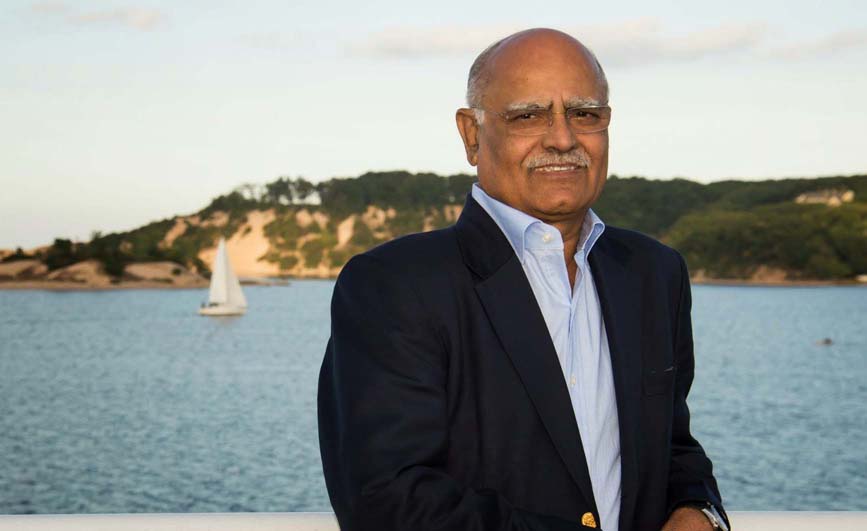 THERE’S considerable speculation surrounding the longevity of the government following the passage of the Women’s Reservation Bill in the Rajya Sabha last week and almost overnight, the UPA regime is seen to be as shaky as an alcoholic’s fingers.
THERE’S considerable speculation surrounding the longevity of the government following the passage of the Women’s Reservation Bill in the Rajya Sabha last week and almost overnight, the UPA regime is seen to be as shaky as an alcoholic’s fingers. By steamrolling the Bill through after evicting belligerent MPs from the SP and the RJD, the government is said to have annoyed “ allies”, leaving the minority regime weaker now than ever before. True, in purely numerical terms, the argument holds water even though the support of the SP and the RJD, led by Lalu Yadav, was at best symbolic.
Together, the two account for 24 Lok Sabha MPs and 16 in the Rajya Sabha. The latter will come down drastically further once the biennial elections to the Upper House are held in the next two months.
I don’t think such considerations were swirling in the minds of either Prime Minister Manmohan Singh or Congress chief Sonia Gandhi when they decided to end 14 years of procrastination and push through the Women’s Bill. A government is judged by the determination with which it pursues its agenda and delivers on its promises. But what we have seen in the last six months is the UPA- II abandoning many of its initiatives under pressure from unpredictable allies like the DMK, Trinamool Congress and others.
Several big ticket reforms on labour and land acquisition and disinvestment in Public Sector Undertakings are on the backburner.
The Women’s Reservation Bill was neither the most difficult nor the most contentious of the many pending legislations.
But tactically, it was the most potent weapon in the government armoury to bulldoze the opposition outside and tame the unruly ones inside. It is no secret that the BJP was a house
 divided on the issue. The opposition to the Bill in its present form within the Congress was no less as were the reservations of some of the alliance partners. But for Sonia, the bill was an article of faith and therefore, non- negotiable.
divided on the issue. The opposition to the Bill in its present form within the Congress was no less as were the reservations of some of the alliance partners. But for Sonia, the bill was an article of faith and therefore, non- negotiable. Once the government made clear its intention to introduce the Bill last Sunday, some Opposition leaders as well as sections of the Congress sought more time to discuss the Bill in meetings with senior ministers.
When the message was conveyed to Sonia, her reaction was said to have been: “ What were they doing for 14 years? How much more time do they need?” Once the message percolated down that it was the High Command’s wish, reluctant partymen and alliance partners kept Lalu Yadav their reservations under wraps and came out in wholehearted support of the Bill. For much of its first term and indeed in the eight months of its second term, UPA- II has been hounded by fear and pressure.
For the first time, we now see a government saying that we will not negotiate out of fear, or rule under pressure. By pushing the Women’s Bill through, both Manmohan and Sonia have sent out a clear message that henceforth, governance will be on the Congress’s terms. Thus, technically it is the UPA Government that is in power; the agenda will be that of the Congress. The allies should be happy with little slices of the power cake. Such arrogance would seem misplaced considering that the Congress has no more than 204 members in the 544- member house and withdrawal of support by one of the big alliance partners is enough to bring the government down. But the Congress also knows that the political contours of the 15th Lok Sabha rule out the formation of an alternate government. The BJP just doesn’t have the numbers to even make a claim. The alternative is fresh polls, which of course nobody wants.
That’s why I see the passage of the Women’s Bill as a milestone for the UPA. It has helped the Sonia- Manmohan duo stamp their authority on the alliance. The unpredictable allies, who have in the past held a pistol to the government’s head, will now think deeply before setting out to indulge in political blackmail.
It is to be hoped that the confidence does not get converted into arrogance. If the good doctor can continue with his trademark humility, the remaining four- and- a- half- years of the UPA will be quite different from the first five- and- a- half. Plans kept in deep freeze are likely to be revived, big ticket reforms will be back on the agenda. And four years on, it may be time for UPA- III.

No comments:
Post a Comment